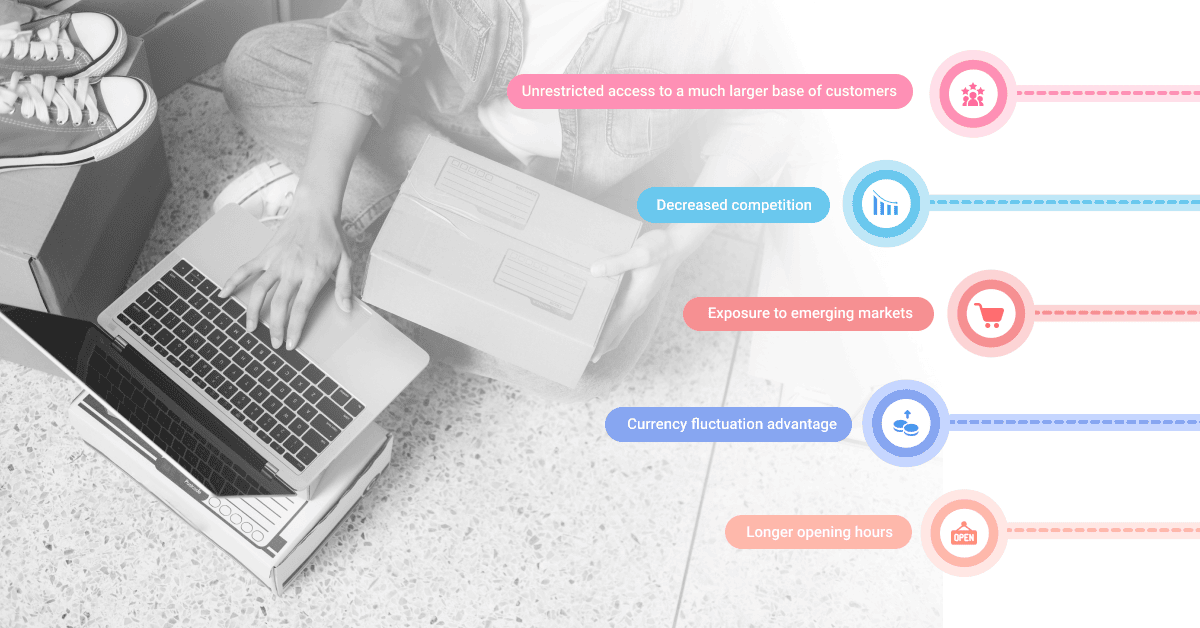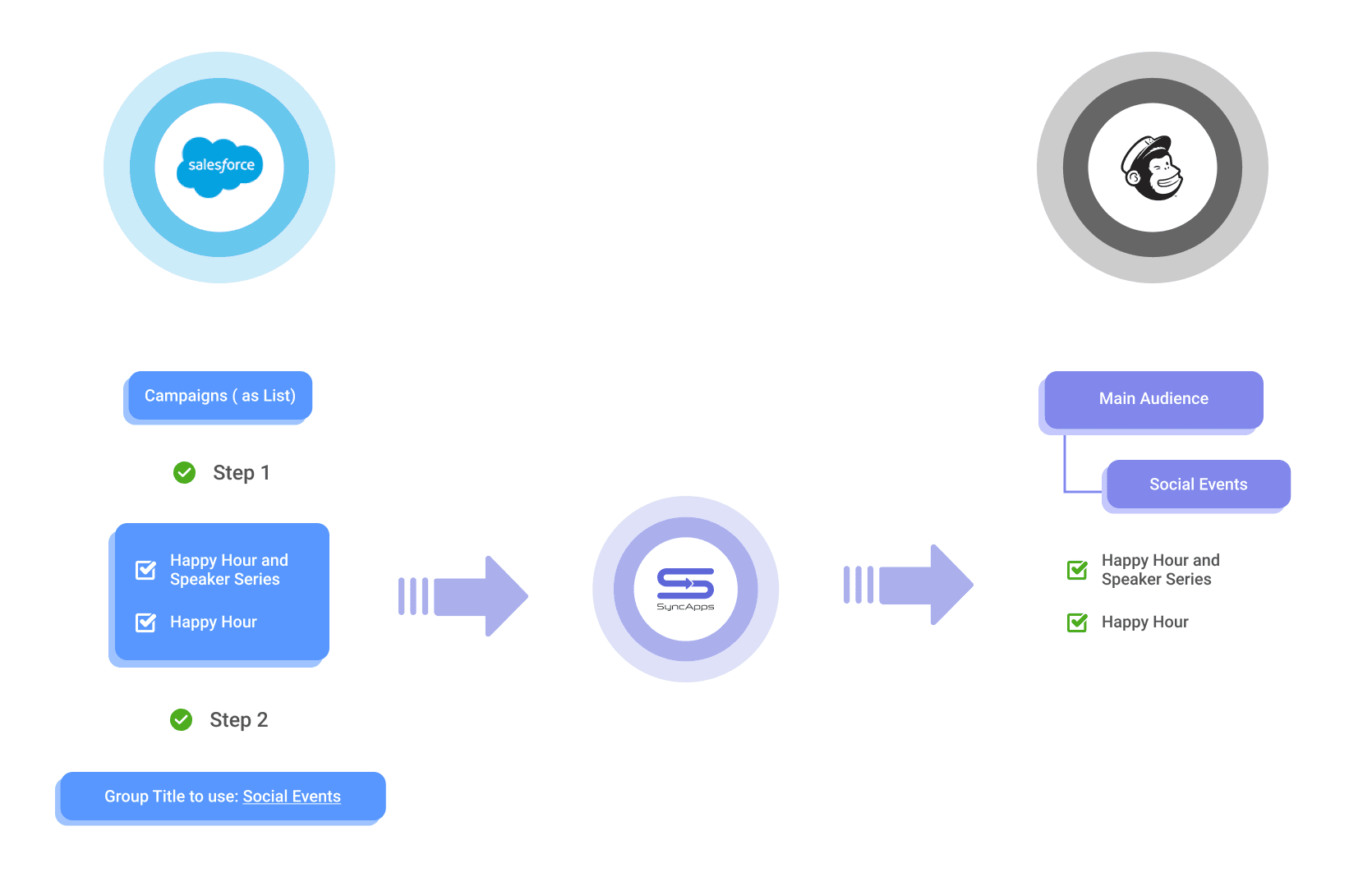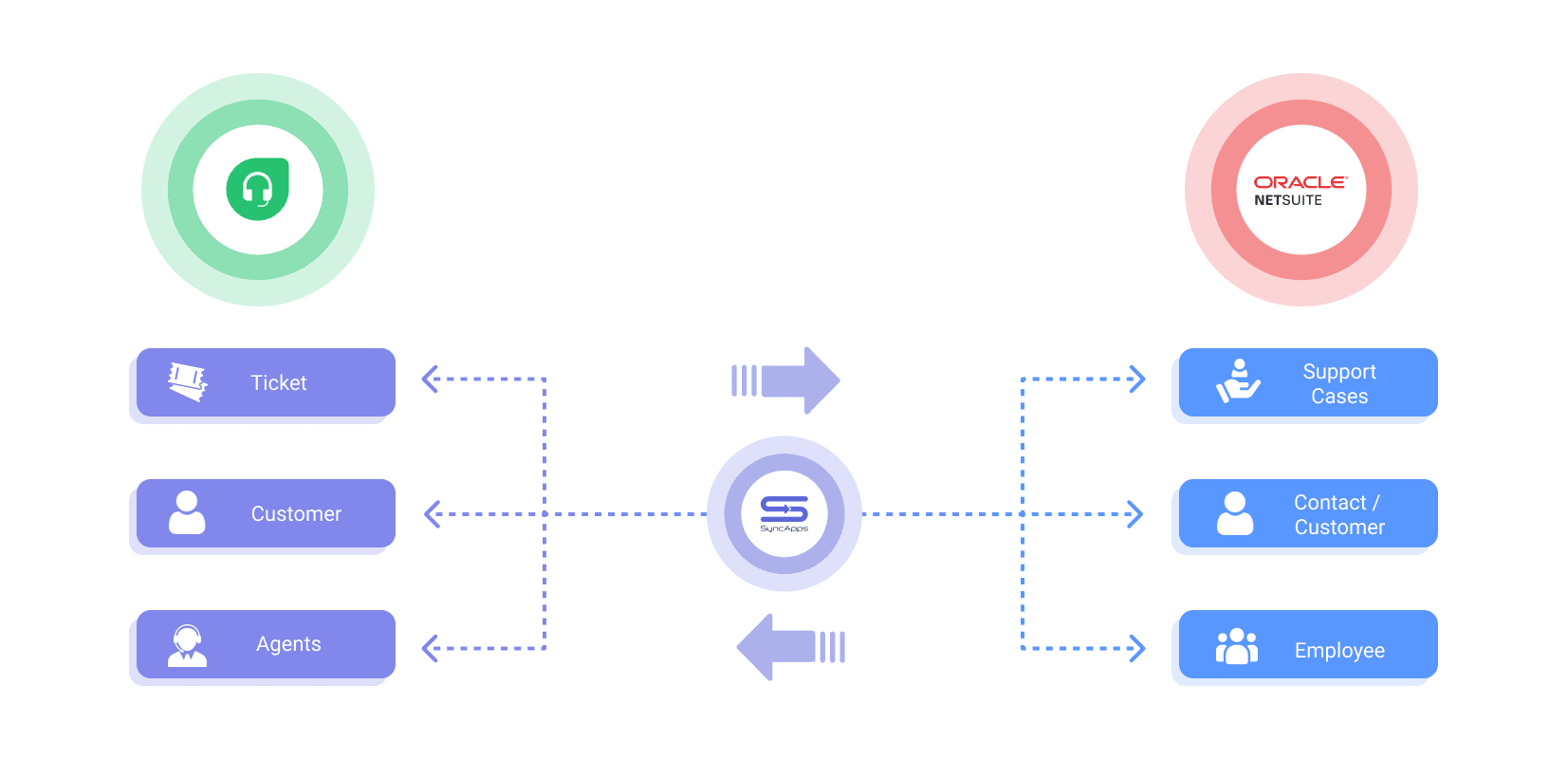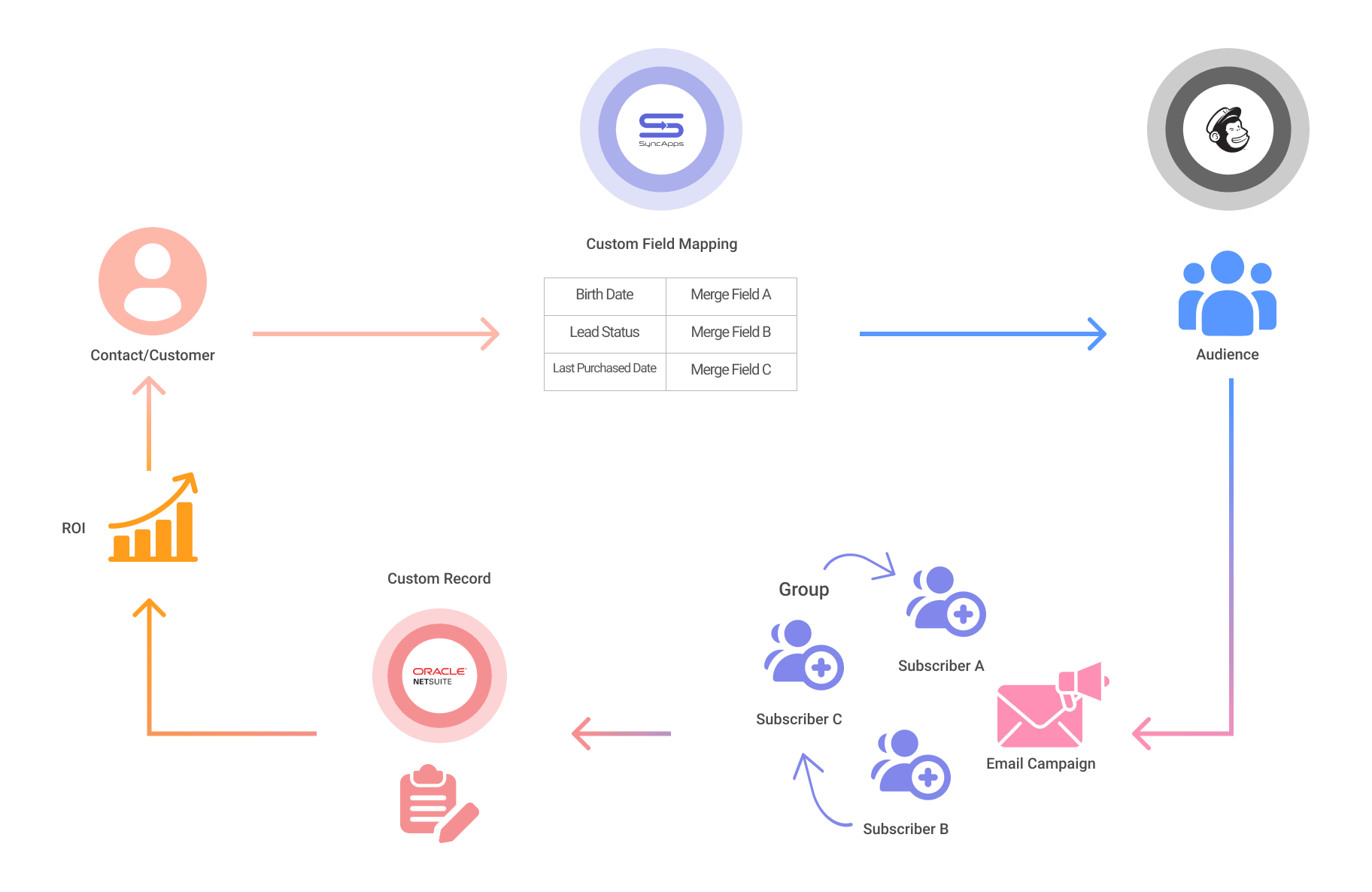eCommerce Growth: How to Start Selling Internationally



As the local competition among homegrown brands intensifies, companies big and small need to look outward if they want to grow their sales significantly.
One of the most effective ways brands can protect their competitiveness is through tapping into other regional markets. This is exactly what most brands are doing, having realized that their local customer base is no longer not enough to enable them to grow at sustainable rates.
Here’s the thing. International eCommerce is growing. To put this into perspective, let’s take a look at some numbers.
In 2020, global retail eCommerce sales amounted to $4.28 trillion, with e-retail revenues projected to grow to $ 5.4 trillion in 2022. This growth can largely be attributed to the after-effects of the global health crisis that resulted in movement restrictions, subsequently fueling online shopping.

Image Source: Statista
According to eMarketer, worldwide ecommerce will approach US$5 trillion this year and $6 trillion by 2024 despite some regional economies easing their pandemic-related restrictions.

Image Source: eMarketer
Amid the economic uncertainty caused by the global health crisis, popular online retailer Amazon reported a record performance in 2020 with its annual revenue surging by 38 percent to a colossal $386 billion.
Amazon’s impressive milestone represented a yearly increase of over $100 billion after its net profit grew by 84 percent in 2020 as compared to 2019.
This impressive growth was also replicated by other global eCommerce players as well. eBay’s annual net revenue for 2020 exceeded $10 billion for the first time in history – a monumental surge from $8.6 billion in 2019. Canadian eCommerce giant Shopify also reported a 94 percent increase in Q4 2020 revenue compared to the prior-year quarter.

Image Source: Statista
If the above phenomenal performance by the global eCommerce giants is anything to go by, then eCommerce is looking super promising at least for the foreseeable future. This is exactly why more brands need to start selling internationally to ultimately grow their respective customer base and widen their revenue streams.
For the brands that haven’t joined the lucrative international eCommerce bandwagon, below is a sneak peek of some of the benefits of selling internationally and securing multiple revenue streams by entering new markets.
1. Unrestricted access to a much larger base of customers: The world has become a global marketplace and a viable alternative to the already saturated domestic markets. Going global brings with it new revenue potential.
2. Decreased competition: Selling internationally decreases local competition by exposing your products and services to a global audience. This significantly increases your chances of boosting your sales.
3. Exposure to emerging markets: Certain products may experience subdued sales in your region. With international selling, you have a chance to tap into emerging markets that might be new to some of those products, ultimately enhancing your sales for that period.
4. Currency fluctuation advantage: Selling internationally also exposes your business’s currency exchange rates that boost your profit margins. For example, if your products are selling in Japan and the Japanese Yen is stronger than the U.S. dollar, your profits will be in Yen. If you convert the Yen against a weak dollar, it means you will have more dollars in your bank account.
5. Longer opening hours: Domestic markets are tied to set operating hours, which limits purchase activity even within their eCommerce sites. Selling internationally, on the other hand, maximizes the number of shopping hours as buyers from different time zones become active when your domestic customers are not.
So, you are probably asking yourself, how do I tap into this international selling trend? Well, this article will guide you on how you can quickly get started without spending a fortune.
In this article, we have curated the key steps you need to take even as you embark on your international selling journey.
This should be your very first step. You need to find your target markets that make sense for your business and get to know who they are, what they buy, and how they shop online. Selling internationally may sound as simple as throwing all your products onto a website and waiting for orders to start coming in.
Well, it’s not that simple.
At this stage, you need to gather market intelligence to see what regions are already buying from you and which ones you can venture into. You also need to do extensive demand research for your products or services and the local buying trends of the regions you want to target. Always target countries with strong demand for your products and niche and low competition.
As part of your market intelligence, you also need to learn about your customers’ preferred payment methods as well as the best local payment providers. More often than not, most people will prefer to pay in their local currency.
Your payment provider of choice should let you list your products in a number of currencies. You should also consider offering currency conversion calculators so that your customers know exactly how much they are spending.
When international buyers purchase your products, they expect delivery within a reasonable timeframe. For this to work well, you will need a solid delivery strategy that will ensure that your customers receive their orders on time and in one piece.
One undelivered order is all it takes to reverse any gains you might have achieved, so be extra careful with this one. Ideally, choose local partners to work with for delivery.
Selling internationally is not as straightforward as it looks. Just like selling locally, you will also need to assemble a capable team of international salespeople to help you market and push your products or services abroad.
Thanks to remote working, you can form partnerships or alliances with local marketing agencies or even recruit a team directly. Why not work with your existing team?
Well, they might be great salespeople, but they don’t know the new market. Working with local sales reps means you will be working with people who know the local language, the local customs, and even things that seem small but can weigh a lot, like the local holidays.
After choosing which countries to market your products to, you will now need to put together a well-thought-out marketing strategy to drive your international sales. In the strategy, you need to identify the right marketing channels that are suited for your target international markets.
As much as Google and Facebook are popular, other countries have other players that are dominating their digital marketplaces. China is a good example where Google is almost non-existent, while Baidu takes the lion’s share of the online marketing landscape.

Image Source: Statista
If your eCommerce strategy is pointing towards Africa, then you might want to invest heavily in a mobile app. This is because of the surging smartphone penetration rate, which registered a growth of 16.8 percent in Q1 2021 with a staggering 23.4 million units.
Yikes, right? Laws and taxes are bound to take the fun out of everything, even out of an international expansion.
Just like domestic markets, international markets also have their own set of rules and regulations that eCommerce businesses need to adhere to. You should, therefore, find out about the regulations that govern cross-border eCommerce in the countries that you plan to expand to.
Familiarize yourself with taxes and fees that will have an impact on the landing cost of your products that you will be selling internationally and clearly inform your customers upfront of any additional cost.
To give your international customers that much-needed confidence in your eCommerce store, your returns policy needs to be on point. Online selling is prone to errors every now and then, and customers expect you to rectify any mistakes that occur without too much fuss.
A good return policy offers customers a sense of security, which is very much needed when you run a relatively new brand on their market. Again, local partners can help. Different countries have different rules for returns, so make sure to check the local ones before you establish your return policy.
To make it super easy for your international customers to find what they are looking for in your eCommerce site, you should seriously consider localizing your site. Your website developer should be able to help you identify reliable translation vendors that provide localization services.
Doing this will significantly enhance user experience and, of course, sales. Even if the potential customers in your new market are fluent in English, it’s still more comfortable to buy from a website in your local language.
This pretty much goes without saying, but we shall say it anyway. Once you have everything set up and you are now ready to start selling internationally, you will need to market and advertise what you are selling. Start by localizing your marketing to suit your new international audience and specifically the countries they are in.
Create country-specific digital campaigns that will resonate well with your target audience. A good place to start would be the Facebook Ads Manager. This tool will help you effectively manage when and where your digital ads will run as well as help you to track how well your campaigns are performing in specific regions.

Image Source: Facebook
To button everything up nicely and ensure that your international selling strategy works like a charm, you will need an integration strategy that will help you make good use of the data received from different sources – website, marketing automation, email, etc.
Data is critical for any eCommerce business, but especially for those with international ambitions. It is the only effective way to get valuable insights about your market(s), customers, partners, trends, and patterns.
Integration is the only way you can tap into these information-rich resources.
Take Shopify integration, for instance. If you’re a Shopify user, you know how easy it is to start selling internationally — you just have to use their localization services. But what about your marketing and sales?
This is where SyncApps comes into play. As an iPaaS market leader, we offer several Shopify integrations to power your international sales. Connect your Shopify account with Mailchimp, Constant Contact, Salesforce, and others.
It takes a few minutes to create an integration in your SyncApps dashboard — it’s all you need to start saving dozens of hours of manual work every month. With the SyncApps Shopify integrations, you can easily manage your stocks from a single dashboard and keep a close eye on all your campaigns, no matter what market they are designed for.
But that’s not the only integration that can help you sell internationally faster and easier.
SyncApps Mailchimp for Salesforce integration is specifically designed to help you leverage every available feature in Mailchimp and Salesforce while enjoying exclusive ones as well.

Another suitable eCommerce integration for your international online business is SyncApps Freshdesk and NetSuite – a great, result-oriented solution that is designed to help simplify interactions with customers.

Freshdesk and Netsuite integration also offer eCommerce businesses a 360-degree view of their customer insights. This handy feature will help you to combine your eCommerce back-office operations with customer support. It will also help you to streamline support channels including chat, social, email and phone as well as synchronize updated data immediately.
Another killer eCommerce integration is Mailchimp for NetSuite – a solution that helps online businesses thrive amid stiff competition and emerging digital challenges.

This integration will help your international sales and marketing team to send marketing emails, automated messages for shopping cart activity as well as targeted digital campaigns to both existing and potential customers.
It will also manage opt-outs automatically, saving you time and money. You will also be able to seamlessly sync customers, products and orders data that’s coming from NetSuite to Mailchimp.
Whether or not the current global crisis continues to bite, selling internationally is the ultimate growth driver for eCommerce businesses. As more people shift their shopping preferences in favor of online, there’s no other potential profitable space for eCommerce businesses to be.
Global eCommerce trends speak for themselves. Focussing solely on domestic markets is proving to be unsustainable. This reason alone is good enough to give you the much-needed push to go international today!
It might seem hard to expand to international markets at first, but with the right strategy and digital solutions, you can do everything remotely. Plus, you’ve got integration to help you bundle everything together and keep an eye on your overseas operations at a glance.